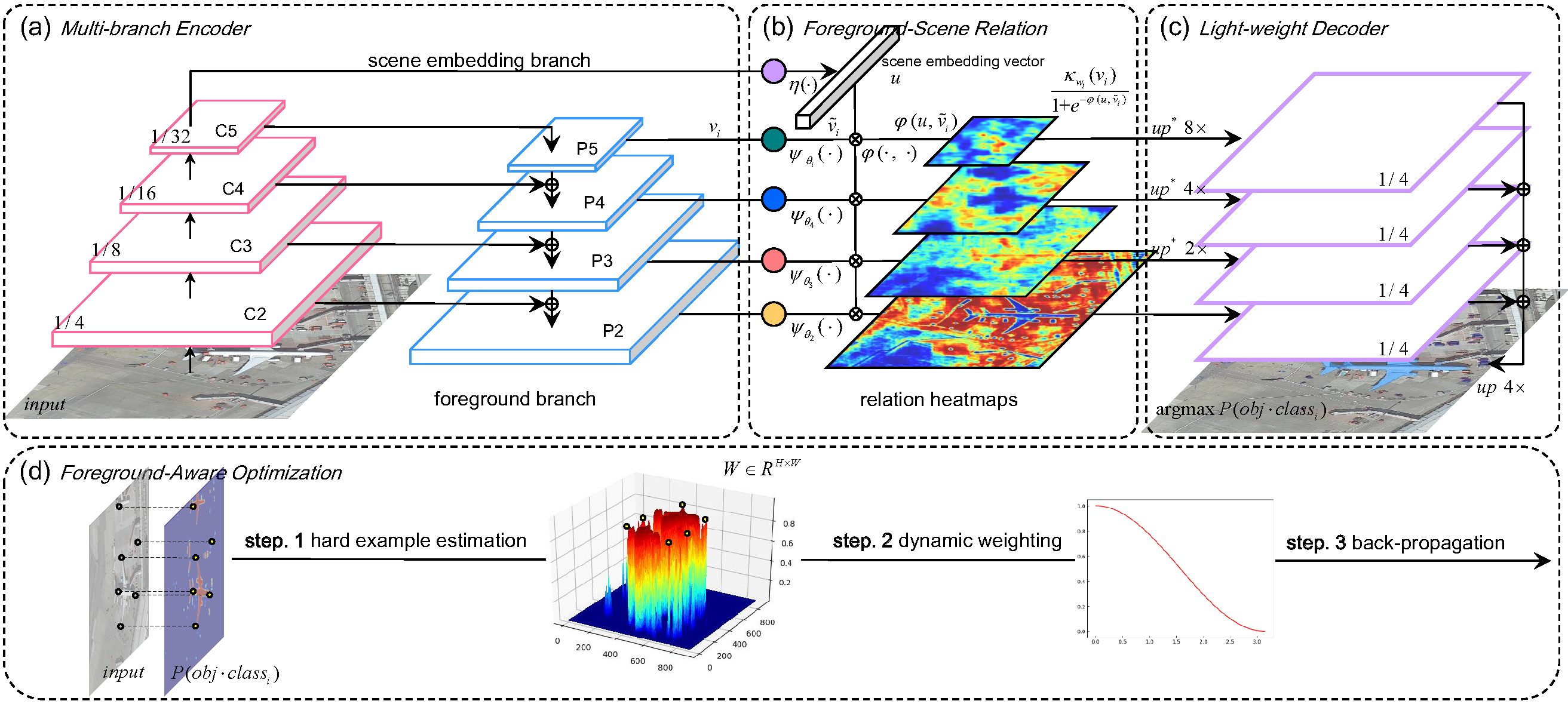Foreground-Aware Relation Network for Geospatial Object Segmentation in High Spatial Resolution Remote Sensing Imagery
Zhuo Zheng, Yanfei Zhong, Junjue Wang and Ailong Ma
This is an official implementation of FarSeg in our CVPR 2020 paper Foreground-Aware Relation Network for Geospatial Object Segmentation in High Spatial Resolution Remote Sensing Imagery.
- 2024/03, source code of FarSeg++ is released.
- 2023/10, UV6K dataset is publcily available.
- 2023/07, FarSeg++ is accepted by IEEE TPAMI.
If you use FarSeg or FarSeg++ in your research, please cite the following paper:
@inproceedings{zheng2020foreground,
title={Foreground-Aware Relation Network for Geospatial Object Segmentation in High Spatial Resolution Remote Sensing Imagery},
author={Zheng, Zhuo and Zhong, Yanfei and Wang, Junjue and Ma, Ailong},
booktitle={Proceedings of the IEEE/CVF Conference on Computer Vision and Pattern Recognition},
pages={4096--4105},
year={2020}
}
@article{zheng2023farseg++,
title={FarSeg++: Foreground-Aware Relation Network for Geospatial Object Segmentation in High Spatial Resolution Remote Sensing Imagery},
author={Zheng, Zhuo and Zhong, Yanfei and Wang, Junjue and Ma, Ailong and Zhang, Liangpei},
journal={IEEE Transactions on Pattern Analysis and Machine Intelligence},
year={2023},
volume={45},
number={11},
pages={13715-13729},
publisher={IEEE}
}
pip install --upgrade git+https://github.com/Z-Zheng/SimpleCV.git- pytorch >= 1.1.0
- python >=3.6
ln -s </path/to/iSAID> ./isaid_segm1. download pretrained weight in this link
mkdir -vp ./log/isaid_segm/farseg50
mv ./farseg50.pth ./log/isaid_segm/farseg50/model-60000.pthbash ./scripts/eval_farseg50.shbash ./scripts/train_farseg50.sh
